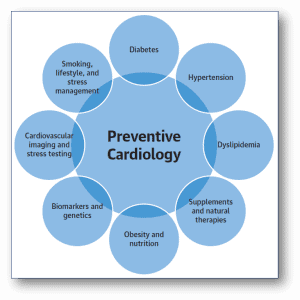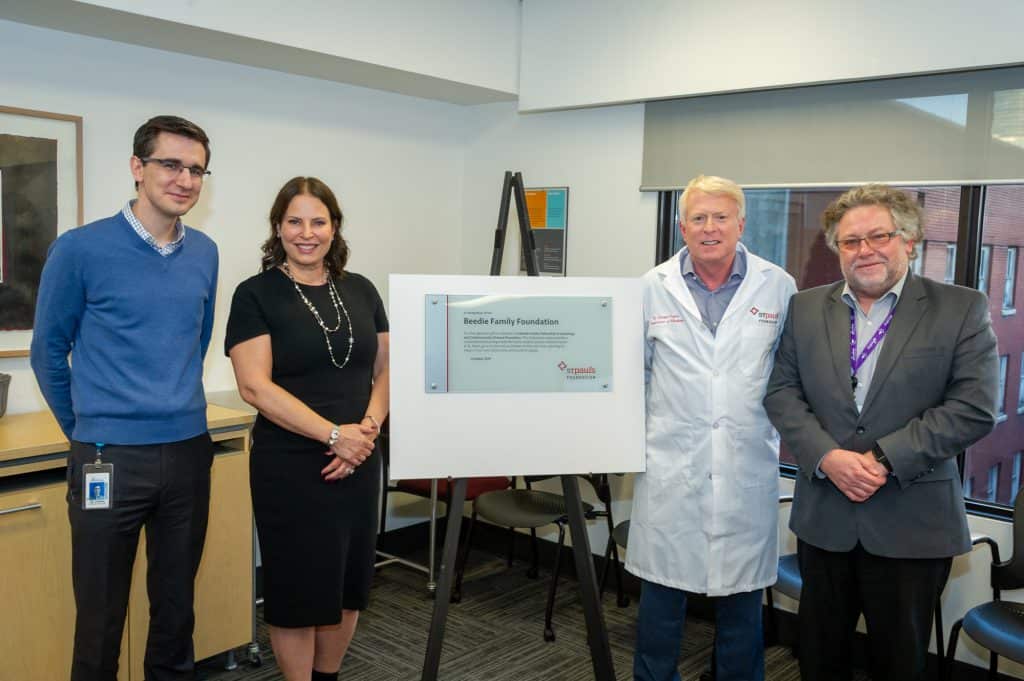The statistics are staggering: Cardiovascular disease is the leading cause of death worldwide, and is the second leading cause of death in Canada. Every hour, 12 Canadian adults with heart disease die.
But St. Paul’s has a plan: Prevent heart attacks before they happen. Early detection and management of medical conditions like high blood pressure, diabetes, and high cholesterol can greatly reduce heart disease risk and prevent early death.
How are we doing this? By teaching and training the next generation of cardiologists, cardiac surgeons, and specialists in cardiovascular disease prevention. And the latest step on the journey to improved heart disease treatment and prevention is the creation of a brand new fellowship: the Beedie Family Fellowship in Lipidology and Cardiovascular Disease Prevention.
This critical fellowship will enhance and change how we care for patients – patients just like Kelly Brady.
From marathon runner to quadruple bypass patient
Five years ago, Kelly Brady was an active 35-year-old. She ran half marathons and played recreational sports, ate healthy, and took care of herself. Her only hint of a problem was that she occasionally felt chest pain with heavy exertion.
Brady, a high school biology teacher, decided to undergo tests. They revealed her heart was fine. But a year later, while undergoing blood tests for another issue, her doctors noticed her cholesterol levels were far too high – particularly for an active young woman. And she was still experiencing chest pain during vigorous exercise.
This time, her doctor ordered a cardiac CT scan that revealed her coronary arteries were 90 per cent blocked. Doctors ordered an angiogram to get a better picture, and the angiogram confirmed just how severely blocked Kelly’s arteries were; her health care team quickly made the call for Kelly to have surgery. Shortly after, Kelly underwent quadruple bypass surgery and is now on cholesterol-lowering statin medications for life.
Familial hypercholesterolemia: The most common genetic disease in the world
It turns out that Brady had a genetic high cholesterol condition called familial hypercholesterolemia, or FH. Dr. Liam Brunham, who is with St. Paul’s Hospital’s Healthy Heart Program Prevention Clinic, says it’s the most common genetic disease in the world, affecting one in every 250 people. Yet it’s about 90-per-cent under-diagnosed.
Dr. Brunham says that is in large part because it has no symptoms until it causes something serious – usually a stroke or, in Brady’s case, serious heart disease. It’s not recognized unless someone has cholesterol tests, and even then, high cholesterol is still often unrecognized as FH, he adds.
Physician and public awareness of the condition is relatively poor, and the St. Paul’s Centre for Heart Lung Innovation team want to change that. They’ve started researching FH patients to improve the understanding of this group, find better ways to identify these patients, and find the best treatment possible for them. This is where the Beedie Family Fellowship in Lipidology and Cardiovascular Disease Prevention will have a direct clinical impact.
The future of heart disease treatment and prevention
This brand-new Fellowship will help support the next generation of lipidology and heart disease prevention specialists, by passing on the knowledge and expertise of St Paul’s physicians while also advancing critical research to enhance patient care. There is no educational or government funding for a fellowship like this, so we are immensely grateful to the Beedie family for this generous gift.
The family was inspired to make this difference-making gift because Cindy Beedie, a passionate philanthropic and community leader, received life-changing care as a patient at St. Paul’s.

Paving the way
The future of the fellowship is already looking bright: the first fellow, Dr. Pol Darras, joined St. Paul’s last fall and has hitting the ground running.
Says Dr. Darras, “This Fellowship is an amazing opportunity to expand on my knowledge and skills in cardiovascular disease management. I am very grateful for the support and mentorship I have received, and I’m excited to contribute to the world-class research and care being delivered to patients at St. Paul’s.”
Dr. Darras’ focus is in Type 2 diabetes and heart disease, a huge area of need in prevention research. He’ll be focusing his research over the next year on this area, specifically on lifestyle modifications to prevent and reverse health conditions like heart disease.
After his fellowship, Dr. Darras will become a full-time physician at St. Paul’s Healthy Heart Clinic, and faculty member at the UBC Division of Endocrinology.
Changing lives, one patient at a time
The Brady family isn’t taking any chances. After her treatment at St. Paul’s, Kelly urged family members to get tested. Test results revealed her sister, that sister’s 10-year-old daughter, and two cousins, all have FH. Now armed with this knowledge, these women can get treatment before the condition gets serious.
Dr. Gordon Francis, Medical Lead of the Healthy Heart Program Prevention Clinic and Principal Investigator at the Centre for Heart Lung Innovation, drives the point home. “More than 2.5 million Canadians are living with heart disease. The more we understand about preventing and slowing the progression of cardiovascular disease, the more we can improve patient outcomes by empowering patients to live heart-healthy lifestyles and improving the wellbeing of our communities.”
To support the life-saving work being done at St. Paul’s Healthy Heart Centre, please consider making a gift today at donate.helpstpauls.com/heart.
